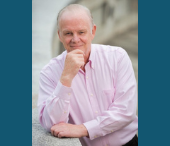Heath LeBlanc
2021 KEEN Rising Star
Heath LeBlanc, Associate Professor of Electrical & Computer Engineering at Ohio Northern University, received the top award for the 2021 KEEN Rising Star. The following is taken from his interview with Edmond J. Dougherty, Retired Professor of Practice and Director Engineering Entrepreneurship, Villanova University.
Dr. Heath LeBlanc
Early on in his life in Baton Rouge, LA, Heath LeBlanc was very aware of careers in the petrochemical industry where most of his family worked. His grandfather and uncle had careers at Dow Chemical; his father recently retired from Exxon Mobil.
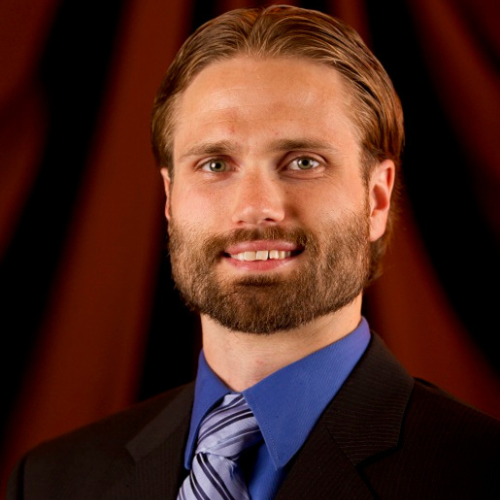 So, since the petrochemical industry surrounded him and was practically a family business, when Heath entered Louisiana State University (LSU), he of course decided to major in Dentistry.
So, since the petrochemical industry surrounded him and was practically a family business, when Heath entered Louisiana State University (LSU), he of course decided to major in Dentistry.
Wait, now. Dentistry?
“Yes, Dentistry. I was excited about that. I joined the pre-dental club at Louisiana State University (LSU). One day we travelled to New Orleans and took a tour of the Gross Lab (Human Gross Anatomy Laboratory at the LSU School of Medicine). I quickly realized that dissecting cadavers was not on the list of things that excited me.”
And so, he reconsidered his major.
Interest in Electrical Engineering
Heath loved math, but wasn’t sure how to make a career of it. He asked himself, “What can I do as a career that will apply this passion I have for Mathematics? And how can I use it in a way to help others?”
While trying to decide on a career path, Heath thought back to his youth and remembered a hardbound book he was given as a gift in the third grade. The book was about electricity and magnetism experiments for children. “I remember thumbing through that book and thinking how interesting the experiments were. A month or two later I had a science fair project to complete. I decided to assemble an experiment from my new book. My mom and dad purchased the wire and battery that I needed. My dad gave me an old iron nail out of his work box out in the shed. I wrapped the wire around the iron nail, connected it to a large lead acid battery and made an electromagnet. I was picking up paper clips and tinkering with it. I presented it as my science fair project.”
While the memory of his childhood book rekindled his interest in electricity and magnetism, he still thought of it as “physics” or “general science.” He was still not sure how his youthful experiments could be applied to a practical career involving his love for mathematics. That is, until. . .
“It so happened that the calculus instructor had been working on an electrical engineering Masters degree. After a conversation or two with him, I decided to pursue electrical engineering.”
It combined so many of his interests: electricity, magnetism, math, calculus and, as a bonus, there was no requirement to dissect dead bodies. Heath realized that an electrical engineering major would also help him achieve his other goal: to help others.
“Engineers have the power to really shape society in a lot of ways by employing innovation and putting technical skills into action. I feel combining game changing creative ideas with disruptive technologies is unique to engineering. There are plenty of designers, artists, and entrepreneurs that can have great ideas, but to make those ideas reality, you need engineering. That's why engineering is special. With engineering we can help society along multiple dimensions.”
Talent for Teaching
“Not too deep into my pursuit of electrical engineering," Heath said, "I discovered that I had a knack for explaining difficult concepts in a way that others could understand. I got the teaching bug. My greatest desire became helping others learn. I have such a love of learning and I want to share that.
“I noticed my friends and colleagues would often become really frustrated with the content that was just given to them in the lectures. I would go through and explain it to them. They would start to interact with it in new ways where I could tell they were enjoying the course more and were feeling more self-confident. When I realized I could help someone else feel more confident and move towards enjoying learning, I found it really exciting. Pretty quickly I decided my long-term vision was to pursue a PhD and go into academia.”
After graduating from LSU summa cum laude, Heath knew he wanted to go to grad school to get a PhD to teach at the university level, but first thought it would be wise to gain some practical industrial engineering experience to bring into the classroom. He spent a year in industry designing and implementing process automation control systems, gaining the knowledge he uses in today’s classroom.
After his gap year in industry, Heath spent the next four years at Vanderbilt University where he earned his Masters and PhD in Electrical Engineering.
Research Interests
As his studies at Vanderbilt progressed, the technology concepts he faced became more and more complex. He continued to show academic excellence as he was able to understand and advance such technologies. He also honed his ability to expertly explain complex concepts to others.
For example, one of his research interests became resilient, cooperative control of networked multiagent systems, a topic not easily understood by the vast number of people, including engineers. When challenged to use his research topic to demonstrate his skill at explaining technology, he replied without hesitation:
“Essentially cooperative control is all about emergent behavior from connectedness. Whenever you have small computing nodes or dynamic systems that start to interact, they also begin to share information. You can discover emergent behaviors from the collective. The idea that you can have unexpected emergent behaviors from local interactions fascinates me. It's like the Connection piece in the entrepreneurial mindset where you can have these connections that can lead to insights, and they are insights that wouldn't have happened without the interacting components. This leads to greater value creation. Value creation can be what I would consider the emergent behavior in that case."
“My research is a microcosm of that. I study the dynamics of individual nodes and local interactions and how they can lead to emergent behaviors for the system. For example, through some very simple interactions, ducks are able to fly and maintain flying V formations. In the V formation the ducks are able to maintain good velocities and trajectories for hundreds of miles using simple local interactions. The emergent behavior there would be the flying V formation where each duck is using just basic collision avoidance approaches in order to maintain roughly the same distance from its neighbor. Each duck falls in line. They just have a couple of small rules that they're using to create the nice flying V formation.
“You could also talk about that for swarms as well as fish schools. The fish are able to avoid predators. They have little interaction rules and they just try to stay close to their neighbors without colliding with them. They are able to make the school appear as a large predator. It helps deter predators from attacking them. If they are attacked by staying close together, they make it more difficult for the predators to get any one of them.
“Another very interesting case is ant colonies. The way ants forage for food randomly, it can be shown that with these local interaction rules, behaving randomly is optimal. When you don't know where the food sources might be, random motion is optimal in terms of distance traveled by the sum of all the ants in the colony.
“So there are examples in nature. My research also applies to self-driving cars, such as swarms of cars on the expressway. I've done some research on the 802.11P IEEE standard and for communication of vehicles with infrastructure, and vehicle to vehicle."
Cyber Physical Systems
Dr. LeBlanc is also interested in Cyber Physical systems. “Cyber physical systems are more complex systems where the underlying physical dynamics of the system depend on the computational dynamics and communication layers of the system. There is an interconnectedness between the different components of the system that lead again to emergent behaviors. But now it's the cyber domain interacting with the underlying dynamics and physics of the physical system.
"Good examples are self-driving cars where you've got the vehicle to vehicle communications, vehicle to infrastructure communication, and the communication layers. You've got all of the ECUs (Electronic Control Units) and the computers on board. Those embedded processors are the computational layer and of course they've got all their physical dynamics that are determined by the actuators, the construction of the vehicle, and the safety concerns.
“All of those type of emergent behaviors depend on the quality of the communication interactions and the computation. This is what has led to so many issues in our vehicles about 10 years ago. We started having so many ECUs that it became very difficult for the car manufacturers to validate that everything was going to work as expected, when you have corner cases with different sensors failing. Auto manufacturers have gotten a lot better in their design and construction approaches, but we've also seen vehicles where you get very strange computer faults that are difficult to diagnose. They weren't necessarily constructed having in mind how many interactions you can have between the cyber layer, communication layer and the physical layer.”
The Road to ONU
Since he obtained his PhD from Vanderbilt, Heath often jokes that he just kept driving North on Interstate 75 until he hit Ada, Ohio, famous for Ohio Northern University (ONU).
“Ohio Northern University is a wonderful place to be able to focus and grow as an educator. It’s a place that really values education. Some institutions will give lip service and portray the image that education is their priority, but here it really is true. Education is the ONU priority.”
Early KEEN Experiences
Dr. LeBlanc learned about KEEN during his very first semester at ONU and understood the benefits of the Network immediately. He was teaching a circuits course and one of his colleagues, Firas Hassan, was implementing a KEEN related project that focused on the customer's value proposition.
In Dr. Hassan’s course, he challenged his students to explain the value proposition of their class projects as if they were actually to be commercialized. “That type of mindset was different from what I had seen before in engineering education. It intrigued me and I adopted the approach also for my class.”
Heath improved his knowledge of entrepreneurial minded learning (EML) through practice and through discussions with Ken Reid. Dr. Reid is currently the Associate Dean and Director of Engineering at the University of Indianapolis, but for six years was the Director of First-Year Engineering at ONU.
“Dr. Reid developed several assessment and learning outcomes in the early instantiations of assessment in the KEEN network. From there I had conversations with Dean J-D Yoder, I was curious to learn more. I heard that J-D was the ringleader for the KEEN work on campus. He suggested that I go to the KEEN National Conference. I went and took Sridhar Condoor’s "Shaping Entrepreneurial Engineers" workshop. I gained a lot of interesting ideas.
“The main thing I remember from Sri’s workshop was his focus on customer pain points, and how we can use them to discover opportunities. That was the first time I heard of that idea, it really resonated and made a lot of sense.”
Creating Engineering Unleashed Cards
After those early positive experiences, Heath also became a great proponent of KEEN’s Engineering Unleashed website to the point where he was involved with creating 72 cards with other ONU faculty.
On Engineering Unleashed, faculty are encouraged to share coursework and other useful EML material on an online template known as cards. “I help out every faculty member who produces a card from ONU. I help them to get it finalized. I ask the faculty member to make me an editor of the card; so I give them feedback and try to make it as good as it can be for the network. It's a bit of quality control. It's curation. It also helps the ONU brand and Engineering Unleashed to ensure the cards are as high a quality as possible.
“When people are looking for ideas they can search Engineering Unleashed cards and find what is available. We, as a network, should be reviewing available cards regularly. Oftentimes a colleague will share an idea with me that they learned from ASEE (American Society for Engineering Education) or FIE (Frontiers In Education) conference. I'll ask, 'Well, have you checked the Engineering Unleashed site? Have you tried to look for a card?’ A lot of times the answer is ‘no’. In that situation, I’ll do a quick Engineering Unleashed search and find something. I'll forward it to them to say, this KEEN item could probably support what you’re thinking about doing."
There are other opportunities, too. "My colleagues John Estell and Stephany Coffman-Wolph are using Engineering Unleashed to highlight one of the papers they're publishing. It's not an entire course, but on Engineering Unleashed, it can be more than a paper. You can add code and programming resources. Extras like that are helpful. With a traditional published paper there are limitations, like the number of pages, that prevent you from sharing everything that you want to. The card format is a concise, structured format that makes it really easy to be able to utilize for content outside the scope of just pure coursework."
“At the KEEN National Conference we all appreciate Engineering Unleashed for the workshops and the sessions. In the same way, the cards work really well as a supplement. We can put all of the different resources that we want to share during our workshop. The card can be a great repository for all the various workshop materials. And the comments feature makes it really easy to give the authors and facilitators feedback. It's a good medium for those types of exchanges across the network and across the country.”
Dr. LeBlanc not only helps create cards, but he uses KEEN EML principles in his teaching. For example, he recently presented his lab class with a curiosity exercise using the Question Formulation Technique (QFT) where students are challenged to ask several questions on a topic. “I usually try to make the topic a bit provocative or outrageous in some way. By doing that, they can hardly resist asking questions about the topic. I just used the technique to teach the Fourier Series, GIBBS Phenomenon, and Essential Bandwidth in my Signals and Systems class.”
Advice to Students
Dr. LeBlanc often shares the 3C’s (Curiosity, Connections and Creating Value) with his students. “I tell them they will enjoy life more if they apply the 3C’s from KEEN: I tell them to be Curious throughout their lives, to make those Connections, and to Create Value."
“I’m convinced the value creation mindset will lead them to a happier career. A lot of the metacognition reflections that we do as part of our EML type activities also makes it easier for students to reflect on the value that they're able to bring. It helps them in interviews, and I think that it helps them throughout their careers.”
Not Just All Work

>
Even for Dr. LeBlanc, life is not all technology and teaching. He does appreciate his time away from campus.
“I like to spend time with my family, playing board games with my wife and our young daughter Claire. We enjoy playing Pokémon cards together. We solve puzzles and read books. I’ve even worked with Claire on soldering and using power tools."
“I also enjoy motorcycle riding. I have a couple of Harleys. I took a few trips this past summer. I went down to Maggie Valley, rode down in South Carolina, through West Virginia, and all throughout western North Carolina and eastern Tennessee. On the first trip I started by myself, and then met my brother-in-law in North Carolina. He lives out there in Winston-Salem. Then my brother rode up from Louisiana and we all met in North Carolina. We then rode around Maggie Valley.”
(Picture at right taken on the trip, at the highest point of the Blue Ridge Parkway near Asheville, North Carolina.)
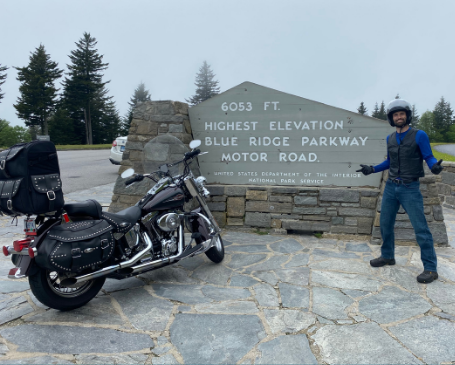
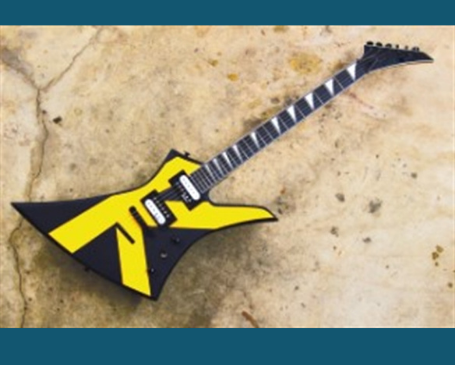
When reminded that a guitar comes with the top KEEN Rising Star award, Heath revealed that he has been playing guitar since he was eleven years old.
"I've played for a long time. It's fun!”
He confessed that he’s daydreamed about playing the KEEN guitar at the KEEN National Conference.
The Future
When asked about future activities, Dr. LeBlanc stated that he plans to use the Rising Star award funding to create a new teaching award at the T.J. Smull College of Engineering at ONU. His intent is to reward faculty for developing innovative activities and assignments that support the entrepreneurial mindset of students based on the KEEN 3C's.
Another future ambition is to one day have lunch with Dr. Karl Reid. Dr. Reid was the keynote speaker for an education conference and talked about a multipronged approach to helping to support students in succeeding. “It just resonated with me. He talked about shifting attitudes, shifting connections and behavior shifts. At that time I was reading a lot of the books on the KEEN reading list and I realized a lot of the research Dr.Reid cited supported the KEEN approach, such as the growth, mindset and the importance of connections. I ended up adopting his book, Working Smarter, Not Just Harder: Three Sensible Strategies for Succeeding in College … and Life, for my orientation class. I started building out activities and quizzes around some of the material in the book.
"I'd love to have a sit down conversation with him about how I can do better to help and support the students.”
Class Activity
New Annual Teaching Award
Sidebar: Former Student Influenced by EML
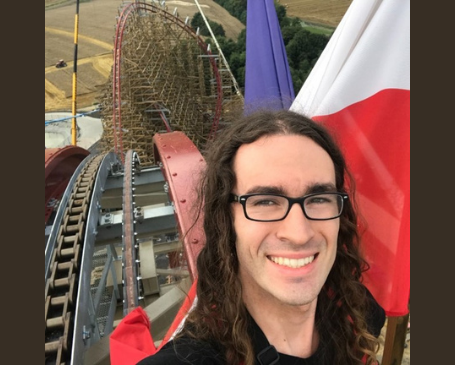
Dr. LeBlanc believes that his former student, Gabriel Russ, is a stellar example of someone who possesses the entrepreneurial mindset.
As far back as Gabe can remember, he dreamed of designing amusement park rides. His education at ONU, and in particular Dr. LeBlanc’s lectures on Controls and Automation, gave him the confidence and knowledge he uses today to design safe, reliable and exciting amusement ride experiences for thousands of park goers on multiple continents.
Gabe now works for Irvine Ondrey Engineering, travels the world over, and seems to love every minute of his career.
About the Author
